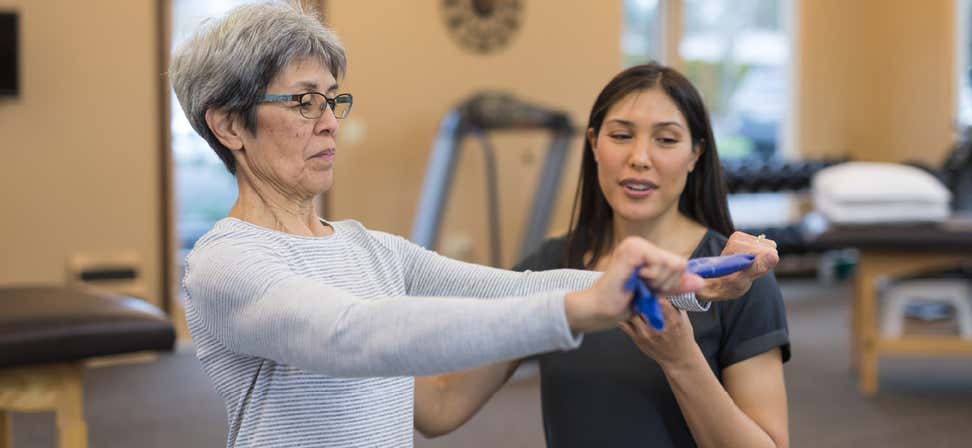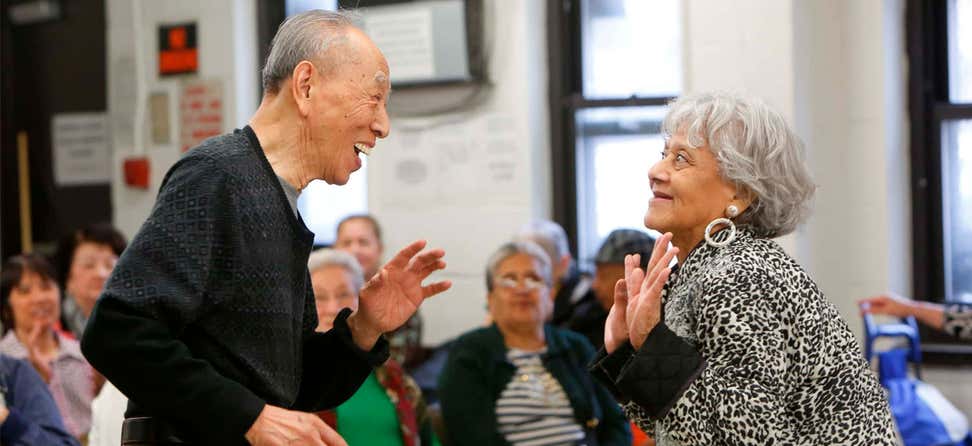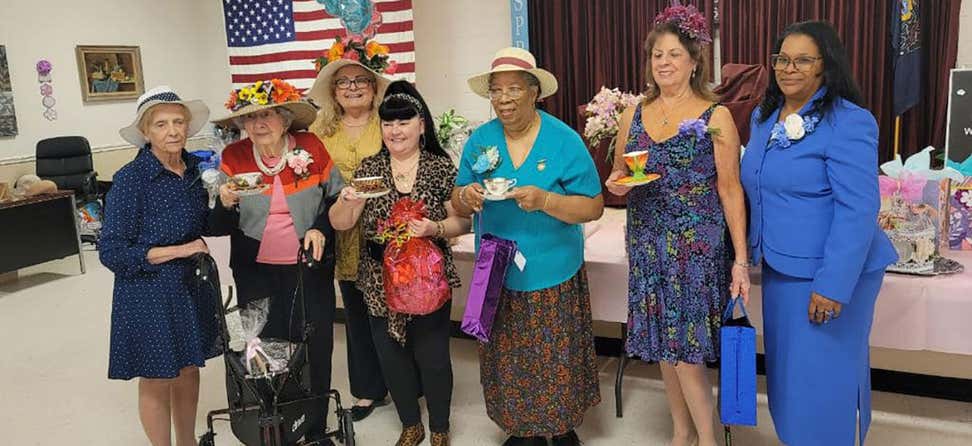The needs of older adults are complex and evolving. To serve this population, exploring partnerships with health care providers such as physical therapists can provide rich opportunities to support health and well-being.
For senior centers, creating and strengthening relationships with health care providers may improve access to resources and services to help older adults manage chronic health conditions. This can be through health and wellness screenings or programming. Partnering with physical therapy is an opportunity to bring the clinic to the community, which can help the clinicians identify challenges faced by older adults, and create ways to better meet the needs of the community.
Why should senior centers partner with physical therapists?
Physical therapists may be a great first step to building these connections. Why physical therapy, specifically? Physical therapists are movement experts. Physical therapists and physical therapy assistants are uniquely trained and highly effective at identifying and treating mobility issues commonly experienced by older adults. They have extensive training and knowledge about anatomy, the aging process, mobility and balance. Learn more about What Is a Physical Therapist and How Can Physical Therapy Help Me?
Several senior centers across the United States currently partner with physical therapists to offer services and programs. The following are examples of common community-clinical partnerships.
Falls prevention services
Physical therapists can provide fall risk screenings, fall prevention workshops and education, fall prevention evidence-based programs (EBPs), or even written content for senior center newsletters.
These types of activities are often highlighted during National Falls Prevention Awareness Week, but there is no reason why they cannot happen all year long. A few ideas:
- For screenings, a senior center could partner with a clinic for a quarterly “Falls Free Friday,” using the STEADI toolkit to offer free fall risk screenings with recommended risk reduction strategies.
- A physical therapist could deliver a seminar at the senior center educating staff and the community on how to identify environmental fall hazards, or best self-management strategies.
- PTs could offer sessions teaching individuals, caregivers, senior center staff and other exercise instructors on best ways to get up from the floor after a fall.
- For EBPs, centers, and therapists can partner to offer A Matter of Balance, Stepping On, or CAPABLE, to name a few. The Otago Exercise Program is one program that can be offered in partnership with a physical therapist or a physical therapy assistant in the community setting. During any of these types of sessions, your clientele may better understand the value of working with a physical therapist. This introduction may empower them to seek the services of a physical therapist if they are at risk for falling.
Health promotion programming
Physical therapists are highly trained to improve a person’s movement. The goal of the PT is to facilitate the individual to be active in the life they want to live. Given their knowledge base and desire to support optimal aging, physical therapists would make excellent volunteers to deliver other EBPs and screenings beyond fall prevention, such as managing chronic conditions like arthritis, diabetes, and chronic pain.
For maintenance of mobility and independence, there is Bingocize, Active Choices, and Active Living Every Day. Examples of disease specific programming are Walk with Ease or the Arthritis Foundation Exercise Program that can be delivered on land or in a pool. Many EBPs supported by the Administration for Community Living, Older Americans Act Title III-D, and Centers for Disease Control and Prevention can be delivered by a layperson. However, having a physical therapist as a guest presenter or to lead these programs as a volunteer may add an additional layer of insight and expertise to optimize movement and function.
Increased visibility of your center’s offerings
Depending on their profession, health care providers may or may not be aware of the depth and breadth of services available to older adults at their local senior center. By partnering with a physical therapist, you can create a direct line of communication to a provider who often treats older adults.
Physical therapists spend a lot of time with their patients during an episode of care; therefore, they may identify patient needs that other providers may be unaware of. Additionally, after a patient has completed physical therapy, it would be beneficial to know where to refer them in order to continue participating in exercise and physical activity!
A win-win partnership
We all know that chronic disease is very common with aging. Almost 95% of adults over the age of 60 have at least one medical condition that they need the skills to actively manage every day. Older adults that have access to resources, like physical therapy, to help them manage their mental, physical, social, and emotional well-being live longer and have improved quality of life.
Learn more about Physical Therapists as Partners for Older Adult Health and Wellness.










